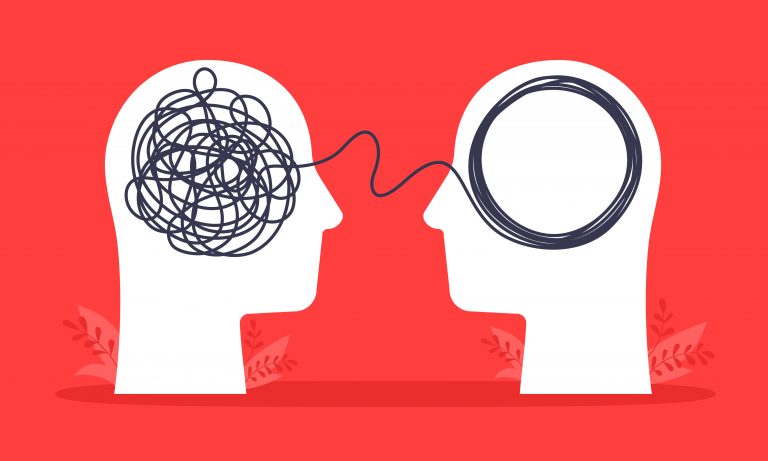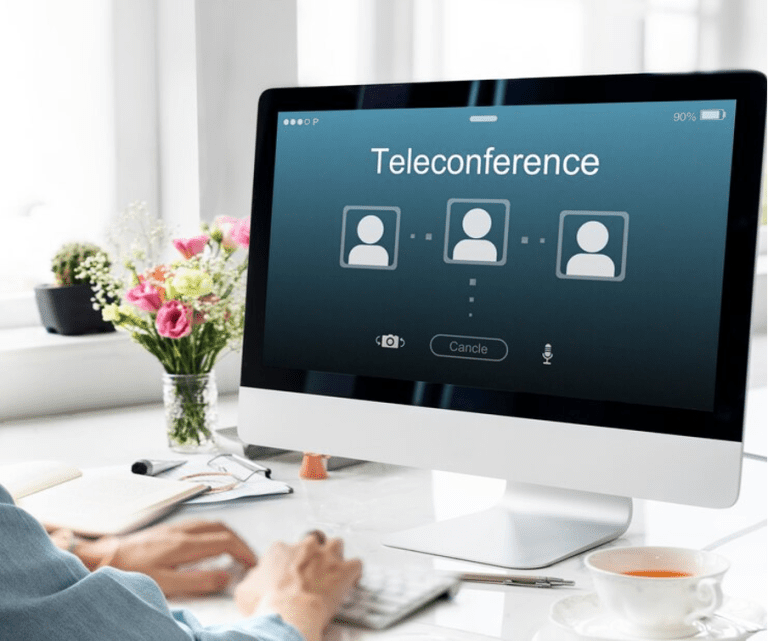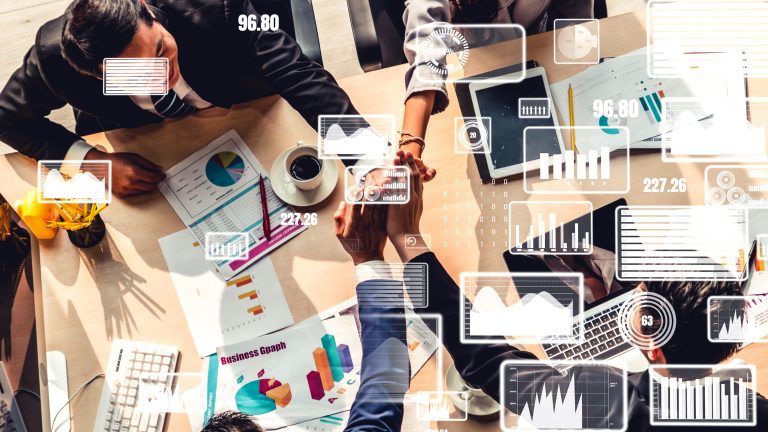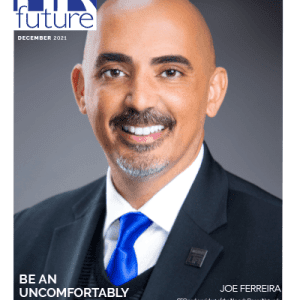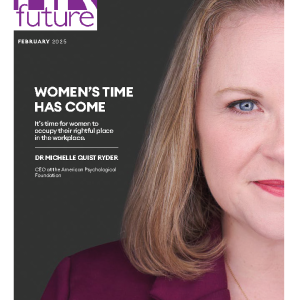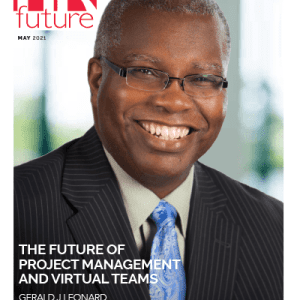Let me be clear. Trends are not about predicting the future, there is no crystal ball. Trends are embedded within a culture, and oh boy, our collective culture evolved in 2020.
We all discovered many things. How Work from Home is totally doable. How we miss social interaction. How an ounce of preparation goes a long way when facing emergencies.
We have seen that HR is truly the heart of the enterprise, supporting safety, informing and aligning, preparing continuity, and that HR Analytics not only is a powerful tool, but is critical first to assemble information and measure impact, and now to envision and enable the return to work.
We have witnessed “two years’s worth of digital transformation in two months” (Satya Nadella).
Now, taking stock of the past and preparing the future, our team of HR corporate advisors has collected a few of the main topics that are being discussed – and for once, we all agreed.
Super-Human Resources
HR is now expected to lead and enable a sustainable workforce while being human and ethical; building trust and confidence is intrinsically part of the mandate, deeply transforming the operating model itself.
It is time to re-think priorities, adapting to the tectonic shift we are living and getting ready to re-assess the digital strategy that will support the New Normal.
The Evolution of Human Resources, IBM Journey to HR3.0
Sources: Digital Strategy in time of crisis (McKinsey, Apr 2020)
“It’s an opportunity for HR to look around and make sure they capture the lessons that their organizations are learning right now so they don’t snap back to something that’s the same or maybe even worse as the pressure of the crisis subsides.”
(John Boudreau, University of Southern California)
New situation – new kind of leadership. Our competences as leaders have been challenged in a different way and have shifted in a new direction: There is no blueprint for what we are facing
1. Skills
The concept of skills has long been proposed as foundational; now it is literally jumping at the center of the internal talent marketplace.
The type of skills required for jobs is changing, including strong technical skills coexisting with adaptive capabilities & competencies; as routine tasks become automated and supported by AI, creative thinking and/or learnability are highly valued.
Ten Action areas critical to HR 3.0, IBM Institute for Business Value
Strategies:
- Plan skills exploration to get visibility on the skills you have to leverage skills transparently to employ and re-deploy faster the total workforce
- Associate skill maps and workforce planning reviews to adapt better, faster
- Leverage digital tools and AI to provide learning opportunities dynamically, based on needs and personal preferences
- Consider that as we re-skill the workforce, we also need to up-skill HR
Data and sources: The total number of skills required for a single job is increasing by 10% year over year. 33% of the skills that were present in an average job posting in 2017 will not be needed by 2021 (2020 Gartner – Talent Neuron Survey, Aug 2020)
41% of CEOs confirm having the people needed to execute (Journey to HR3.0, IBM, Oct 2020 (in collaboration with Josh Bersin)
McKinsey Retraining and Reskilling
Quote: A quick adoption of new, advanced technology is the catalyst and leads to an acceleration in the creation of new roles. Re-skilling and up-skilling can help employees move from one part of the business to another and opening new opportunities for them. This concept can be crucial to get through difficult times of change, but it’s also something we must bring along for the time after the pandemic crisis. Laurent Martenet, PMInternational
2. The Agile explosion
Organizations are seeking agility because of sudden business strategy changes, needing flexible to redeploy and up-skill existing employees. Adapting to new needs may require cutting costs and/or acquiring temporary, contingent workers to fill gaps.
Agile is twofold: on one side, HR need to enable the agile enterprise, as more and more ore CEOs seek to improve agility, with a key role in educating and sharing best practices, ensuring capabilities in processes and technologies are available throughout the enterprise to support the Agile workplace.
On the other side, as HR itself adopts the Agile principles, it needs to cover important strategic levers such as People, Leadership, Structure, Governance, Culture & Mindset, transforming how organisations see HR processes. In doing so, HR looks for a simplified approach that must deliver more with less.
We have seen so far Agile performance management process being introduced, not only simplifying but also deepening the direction and communication patterns; now, attention is shifting to other areas, including design thinking and project management, compensation through instant spot-rewards, learning and more.
Progressive HR leaders understand the greater push for enterprise agility with a forward-thinking, holistic workforce strategy that builds and embeds within the organisation resilience, innovation, speed, adaptability/pivoting, and versatility.
Strategies:
- Considering technologies that can support visual and mobile capabilities for administrative and modeling activities.
- Leverage agile collaboration and learning tools to share the right information at the right time, fostering the right culture
- Release new processes and solutions in agile iterations, to ensure a quick response
Data and sources: 79% executives rate agile performance management an organisational priority (Deloitte 2017)
HR Goes Agile, Harvard Business Review 2018
3. Workplace and well-being
Even after the pandemic subsides, more employees are expected to continue work remotely at least some of the time. As HR leaders prepare for the post-COVID-19 new-normal work environment, questions concerning workforce needs, workforce location and employment model mix will be top of mind, needing to maximize flexibility with respect to where, when and how work gets done.
Work isn’t only about money, but even more so about collaboration, personal growth, career advancement and social interaction. As we see increased numbers of remote workers, we need to understand what work means to us as individual and as a community to address the challenges related to community, culture and work-life integration.
Ensuring well-being in a hybrid workplace is complex. Considered as combination of physical, mental, emotional and spiritual wellness, this trend is welcomed by both employees and organisations. Addressing mental health and exhaustion concerns also takes a relevant place, in consideration of remote work, lack of contact and visibility, and its impact on engagement.
Beyond work-life balance, we are working on building being well in work itself.
Strategies:
- The Hybrid workplace need a clear support by technology, both to provide communication and collaboration, but also to support dynamic scheduling and task management.
- Surveys and pulse reviews help understanding wellness and support actionable corrections
- Leveraging a Personal User Guide or Personal Elevator Pitch as part of the employee’s profile can accelerate and facilitate interpersonal connections.
Data and sources: 76% of HR leaders report that employees struggle to balance work and life. Gartner HR in 2021 (Dec 2020)
2.50$ ROI for every 1$ invested in employees well-being. (Leena Nair, Unilever)
Quote: In a business context, true feeling often disappears under the guise of professionalism. […] It is OK not to be OK. Our personal safety, health and wellbeing are key. (Laurent Martenet, PMInternational)
4. Experience is everywhere
Engagement plays a critical role in everything from loyalty to absenteeism and productivity; it is directly tied to Employee Experience, and it is about much more than HR.
As employees get to be seen as the internal customers, all the activities, all the interactions the employee has with the organization come into focus. To measure experience, we need to embed it within daily activities, combine it with operational data, and surface results with analytics; to act, we need to coordinate with line managers and IT, connect the dots and finally provide intelligent access to all tools in use in one-stop-shop approach.
It is an opportunity for HR, as for most it is seen as a priority within the corporation, and an HR area of expertise as facilitator.
Strategies:
- Align and embed experience and operational data
- Study and deliver a transparent, one-stop shop for all activities to eliminate functional silos and scale EX through the enterprise
Data and sources: Engaged employees generate 59% less turnover; 41% lower absenteeism; 17% higher productivity (Gallup, Feb 2020), https://www.gallup.com/workplace/285674/improve-employee-engagement-workplace.aspx
Reimagining the Employee Experience (Accenture, Aug 2020) https://www.accenture.com/us-en/insights/strategy/employee-experience
Experience: Seize the moment (McKinsey, Jun 2020), https://www.mckinsey.com/business-functions/organization/our-insights/covid-19-and-the-employee-experience-how-leaders-can-seize-the-moment
State of EX (TI People, Dec 2019) https://www.ti-people.com/what-is-the-state-of-ex-in-2019
5. HR Tech grows into Work Tech
HRIS is today the starting point of any well-oiled HR department, yet it is still based mostly on principles of automation. The shift to HR 3.0 moves the focus from processes to personalisation, from the enterprise to the human, integrating work and life; data ownership becomes critical as it belongs now to the individual, with access and visibility being key.
Work Tech stitches together all activities the employee engages in within her worklife, including administrative tasks and on-going strategy, supporting skill mapping and integrating personalisation and experience, leveraging data in transparency to provide business intelligence reports.
In this context, the attention of the enterprise shifts analytics and AI, thanks to rich data to drive action and support continuity planning – and integrating wellbeing, career, collaboration and financial processes in one place.
Strategies:
- Consider options of moving to the cloud to provide easier, wherever, whenever access to data, keeping in mind data protection and GDPR context.
- Automate personalisation options based on individuals, considering priorities shifts
- Focus on analytics, planning on tools that will include AI as engine for D&I, workforce planning, well-being, safety and personalisation
Data and sources:
How HR Tech tools integrate work and life, Josh Bersin, https://hrexecutive.com/how-hr-tech-tools-integrate-work-life/
The shift from HR Tech to Work Tech, David Green, https://www.myhrfuture.com/digital-hr-leaders-podcast/2019/9/24/understanding-the-shift-from-hr-tech-to-work-tech
General references and more reading
https://www.gartner.com/document/code/736140
https://www.econotimes.com/Human-Resources-Trends-1596517
https://www.linkedin.com/pulse/future-work-has-arrived-10-predictions-hr-2021-david-green
https://www.gartner.com/document/code/739018
https://www.gartner.com/document/3992209
https://www.weforum.org/reports/hr4-0-shaping-people-strategies-in-the-fourth-industrial-revolution
Chiara Bersano is the Global HR Value Advisor at SAP.








